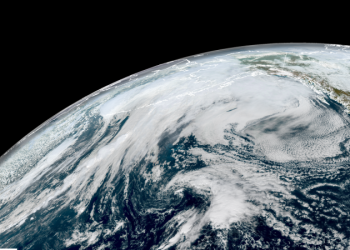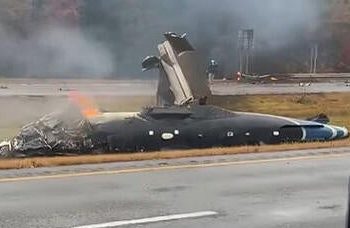More than 30 people have been rescued and three people remain missing in western Alaska after the remnants of Typhoon Halong brought hurricane-force winds and flooding strong enough to sweep away entire homes in coastal communities, authorities said.
Rescue planes were sent to the small Alaskan villages of Kipnuk and Kwigillingok, where people may have been missing, said Jeremy Zidek, a spokesman for the state’s Division of Homeland Security and Emergency Management.
“We received reports that people’s houses were blown away and people were potentially in those houses,” Zidek told the Associated Press.
In Kwigillingok, at least 18 people were rescued and three people remain missing, Alaska State Troopers said in a social media post Sunday evening. In Kipnuk, at least 16 people were rescued and soldiers received second-hand reports of people missing. They were working with local authorities to determine the number of people missing. Search efforts are expected to continue overnight, as conditions permit.
According to the Coastal Villages Region Fund, a nonprofit organization, nearly 600 people in Kipnuk took shelter in a school, while about 300 people in Kwigillingok took shelter in a school. The region is one of the most isolated in the United States, where some communities have few roads and residents use boardwalks, boats and snowmobiles to get around, Zidek said.
“Every effort will be made to help those impacted by this storm. Help is on the way,” Gov. Mike Dunleavy said in a statement.
On the East Coast, forecasters have warned that major coastal flooding was likely Monday in the mid-Atlantic, particularly from Virginia to New Jersey, with strong onshore winds, high waves and high tides. Coastal flooding is expected to peak Monday afternoon and gradually improve through Tuesday morning, according to the National Weather Service.
A northeast moved up the East Coast over the weekend, destroying roads and causing air travel delays. Dangerous surf conditions are expected to continue Monday, leading to strong rip currents and beach erosion along many East Coast beaches, the weather service said. Wind gusts exceeding 55 mph remained possible along New Jersey, Long Island and southern New England through Monday afternoon.
New Jersey has been under a state of emergency since Saturday evening. New York Gov. Kathy Hochul issued an emergency declaration for eight southern counties in her state as the storm gained strength Sunday evening. She urged people to monitor the forecast and avoid traveling. The Columbus Day parade in New York has been canceled.
In Delaware, emergency management officials activated the state National Guard on Sunday in response to rising floodwaters and high winds. A voluntary evacuation order has been issued for the town of Bowers Beach, where the Murderkill River flows into Delaware Bay.
In the Outer Banks of North Carolina, an area seen significant damage caused by the storm This season, ocean overflow has spread onto Highway 12 near Buxton, the Dare County Sheriff’s Office posted online Sunday. The North Carolina Department of Transportation said crews were working to clear the highway that was closed Sunday on Ocracoke and Hatteras.
Waves were fierce in the town of Buxton on Hatteras Island, where several beachfront homes fell into the water in recent weeks. A house lost its stilts on Sunday and appeared on the verge of collapse.









